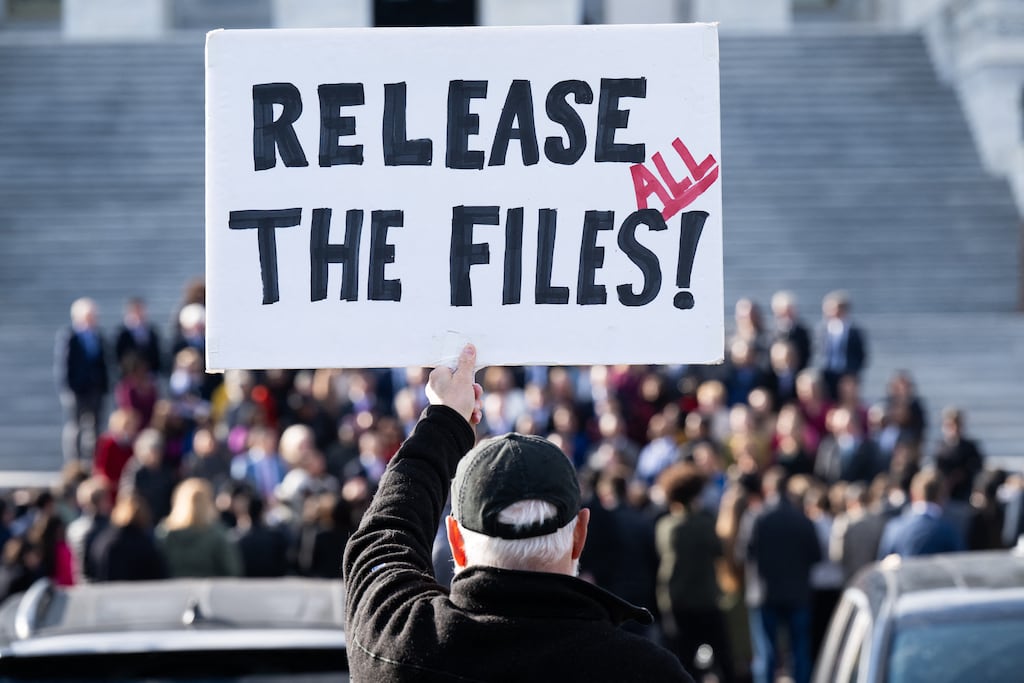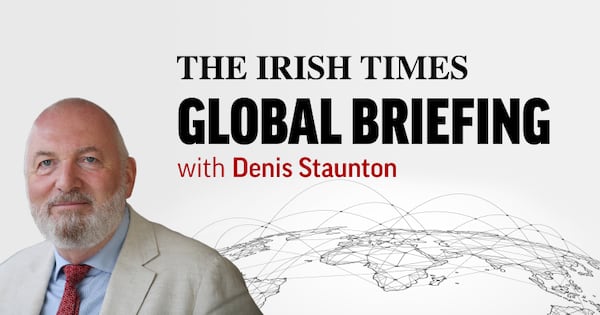US president Donald Trump’s long friendship with Jeffrey Epstein came to an apparent end in the mid-2000s. But Epstein remained intently focused on Trump for years afterwards, seeking to exploit the remnants of their relationship until his arrest on federal sex-trafficking charges in 2019.
In more than 20,000 pages of Epstein’s typo-strewn emails and other messages released by a congressional committee on Wednesday, Epstein insulted Trump and hinted that he had damaging information on him.
By turns gossipy, scathing and scheming, the messages show influential people pressing Epstein for insight into Trump, and Epstein casting himself as the ultimate Trump translator, someone who knew him intimately and was “the one able to take him down”.
The release of the messages instantly pushed the two men’s much-scrutinised relationship back into the public eye, re-energising Democratic attacks on Trump and his justice department for failing to publicly disclose more information from the investigation of Epstein.
READ MORE
The emails date to at least 2011, when Trump was a reality TV star toying with a long-shot presidential run and Epstein was trying to rehabilitate his image after his conviction and incarceration for soliciting prostitution from a minor. The messages continue through the spring of 2019, when Trump was president and his justice department was building a criminal case against Epstein.

[ How Epstein row plunged Maga world into turmoilOpens in new window ]
[ Trump says Epstein is a 'dead issue', but the threat remainsOpens in new window ]
The messages hint that Epstein or his advisers believed they had inside – and potentially damaging – knowledge of Trump’s far-flung properties and business dealings. Some suggest that Epstein thought Trump knew more about his personal conduct than the president has publicly acknowledged.
The trove doesn’t appear to include messages from Trump or anyone purporting to speak on his behalf. The president responded on social media pn Wednesday, writing that “the Democrats are using the Jeffrey Epstein Hoax to try and deflect from their massive failures, in particular, their most recent one – THE SHUTDOWN!”
The emails, the latest batch of Epstein-related documents, were obtained from the Epstein estate in response to a subpoena from a congressional committee. They offer a clear window into his day-to-day communications with friends and associates.
But they are unlikely to quell the furore around the Trump-Epstein relationship. A core part of Trump’s base believes the mother lode of documents, audio files and video related to Epstein are in the possession of the FBI and the justice department. A slice of those documents has been released only in small, curated batches.
The basic contours of their relationship have long been known. Trump and Epstein were friends in the 1980s and 1990s, attending social events in New York or Florida together. One of Epstein’s former girlfriends has accused Trump of groping her, an allegation that Trump has denied. Trump has said that he cut ties with Epstein after his associates recruited teenage girls from Trump’s Mar-a-Lago estate.

But the new emails show that Epstein was closely following Trump’s business decisions and political fortunes.
In April 2011, Epstein wrote to his long-time associate Ghislaine Maxwell, who was later convicted of helping orchestrate Epstein’s sex-trafficking operation, that Trump was the “dog that hasn’t barked”. One of Epstein’s victims, Virginia Roberts Giuffre, had recently gone public about her experiences with Epstein – telling a British tabloid that he had abused her and trafficked her to other men, and providing the outlet with a now famous photo of herself, Prince Andrew and Maxwell.
Epstein’s email said that Giuffre had “spent hours at my house with him” – Trump – yet Trump “has never once been mentioned”. Giuffre said in a 2016 deposition that Trump never had sex with her or even flirted with her.
In 2012, Epstein emailed one of his lawyers, Reid Weingarten, and suggested that he get someone to dig into Trump’s finances, including the mortgage on Mar-a-Lago and a $30 million loan Epstein said that Trump had received. Reached on Wednesday, Weingarten declined to comment, saying he was limited by attorney-client privilege.
As Trump’s presidential campaign gained traction in December 2015, Epstein asked Landon Thomas Jr, then a New York Times reporter, “would you like photso [sic] of donald and girls in bikinis in my kitchen”?
It is unclear whether Epstein possessed such photos. Thomas, who has not worked at the Times since 2019, said Epstein never provided them. Epstein also told him about a time when he said Trump was “so focused” on watching young women in a swimming pool that he bumped into a door, “leaving his nose print on the glass”.
In March 2016, Epstein was bracing for the publication of a book, Filthy Rich, that detailed allegations against him. Journalist Michael Wolff, who had a long-standing relationship with Epstein, told him that he needed to serve up a “counter narrative” to the forthcoming book.
“I believe Trump offers an ideal opportunity,” Wolff wrote. “It’s a chance to make the story about something other than you.” It is unclear whether Epstein responded to the message and acted on Wolff’s advice.

A couple of months later, Wolff told Epstein that he would be interviewing Trump. “Anything you think I should ask?” he wrote.
Epstein replied with a list of “provocative” questions, including about the Trump Shuttle airline, a casino bankruptcy and his debts. “otherwise you can just throw easys,” Epstein wrote.
Wolff did not respond to a request for comment.
Epstein repeatedly insulted Trump. In a January 2018 email to Wolff, Epstein referred to the president as “dopey donald” and “demented donald,” saying that his finances were “all a sham”.
Later that year, Epstein emailed with Lawrence Summers, the former treasury secretary and Harvard University president, about Trump. Epstein called him “borderline insane”.

When Summers asked whether Trump would “crack into insanity”, Epstein replied that the president’s “strength is remarkable. he is pounded 24/7. I hope someone close to him gets indicted, but not sure, otherwise the pressure of the unknown will force him to do crazy things.”
Summers declined to comment and referred to previous statements in which he acknowledged “regretting my past associations with Mr Epstein”.
Many of the messages referring to Trump are banal. Epstein’s staff discussed whether Trump’s arrival at the Palm Beach, Florida, airport would impede the movements of Epstein’s jet. Friends and advisers frequently sent Epstein links to news articles about Trump’s political rise, his policies and investigations into his administration and allies. And associates peppered Epstein with questions about what Trump’s presidency might mean for geopolitics and financial markets.
“Trump ., is scaring the markets not china,” Epstein wrote in August 2015 to an unidentified acquaintance who had asked about economic turmoil.
By late 2018, authorities were closing in on Epstein. A series of articles in the Miami Herald showed that Trump’s labour secretary had signed off on Epstein’s 2008 plea deal. The Herald series prompted the justice department to open a wide-ranging criminal investigation into Epstein.
That December, Epstein was texting with an unidentified acquaintance, who wrote that “they’re really just trying to take down Trump and doing whatever they can to do that…!”
“Its wild,” Epstein replied. “because i am the one able to take him down.”
The next month, Epstein wrote to Wolff about Trump and Mar-a-Lago. “Trump said he asked me to resign, never a member ever,” Epstein wrote. “of course he knew about the girls as he asked ghislaine to stop.”
Trump has said that he cut ties with Epstein after he “stole” Giuffre from Mar-a-Lago, where she had worked as a spa attendant.
On June 13th, 2019 – about three weeks before FBI agents arrested Epstein as he got off a private plane in New Jersey – his long-time accountant, Richard Kahn, told Epstein in an email that he had just finished reviewing Trump’s federal financial disclosure form. Kahn called the form “100 pages of nonsense.” He identified nine “interesting findings” about Trump’s debts, income and charitable foundation.
It isn’t clear why Kahn was digging into Trump’s finances or whether Epstein responded to the message.
Over the preceding months, Kahn had sent Epstein numerous other emails with links to articles about topics such as the investigations Trump was facing over Russian interference in the 2016 election. A lawyer for Kahn didn’t respond to a request for comment.
At other points, Epstein asked acquaintances whether they had information on the lawyers who were representing Trump. It is unclear why Epstein was asking.
This article originally appeared in The New York Times.













